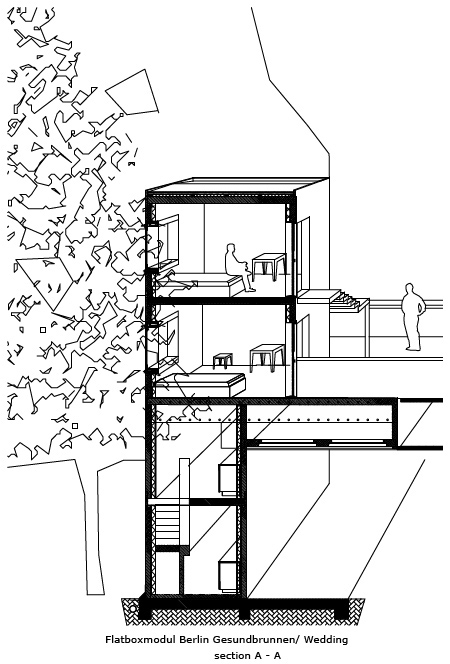
A prospect for 2030 – Conscious City | February, 2015
Until today in germany live ca. 380 000 people without a permanent address. In Berlin there are ca. 11 000 people without a permanent address. These are not only Berlin’s homeless people who lost the flat because of different reasons but also immigrants or simply people who are stranded in Berlin and haven’t got the money to get a flat.
Homelessness can affect anyone. The reasons for that could be the rising rent, job loss, sickness, or social, political, and natural disasters.
The people who are affected by this live like in another world very soon. Usual approaches to civil life and participation are no longer accessible, and so are the easy ways to get something to eat, health care, social and legal support. A street, which is full of supermarkets, snack bars , restaurants, doctors and lawyers will be perceived differently.
Additionally, today in a time of smartphones a street will be perceived differently to the same street 15 years ago. Many things are only accessible through smartphones. The localization of places for the next generation just works through the smartphone.
At this point my draft is pitched.
What will happen if the „homo smartphonius” is homeless sometime?

„STEK 2030” –
Urban development
concept (Stadtentwicklungskonzept) – Situation

With my work I will try to go into the „Stadtentwicklungskonzept 2030” and to suggest possibilities of handling the transformation space Wedding, Buch and Gesundbrunnen in particular. So I have chosen the transformations spaces in question by what they have to offer for homeless people. It is the idea to find a place where accomodation can hook up, use existing structures and somethin new can woven into them.
Such place were localized in the transformation space Wedding, a district still offeringgaps between buildings, occasionally used for supermarkets or small services. I found such a gap in the Prinzenallee where a „Lidl” supermarket is located today. In this place I found the opportunity to hook up a chosen accommodation module to existing structuers, e.g. with a food supply station next to the „Lidl” market.
Furthermore a medical station in Berlin-Buch next to the „Helios” hospital and a social station near the Wedding S-Bahn station connected to administrative offices and the church are to the established.
These specifications combined with the districtive architecture of the accommodation modules I have developed, I will try to make the urban space accessible to homeless people and keeep the barriers of the acces as low as possible.
According to a rough estimate the construction of accommation boxes with the GFA (gross floor area) = 504 m² on the location Gesundbrunnen / Prinzenallee and the construction of canteen with the GFA = 180m² would cost approximately 1.400.000 €. Compared to other accommodation types like halls of residence for students this is fairly low price.
The project could be financed by aid money from the federal government and requires the approval of property owners to sell or give away their land. Finally the project needs the support of supermarkets, addministrative offices and medical institutions.




Energy Concept 2030 – Construction
The energy concept for the flatboxes plans to use the waste-heat of the supermarket.
Because supermarkets often need about half of the waste-heat for their own consumption, you could use the other half to satisfy the demand of the flatboxes.
At the same time the supermarket could optimize his own energy consumption.
Through an easy roof modification one could use the daylight for the illumination of the supermarket.
